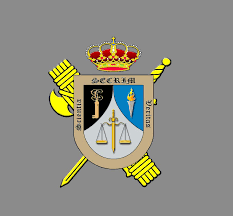

Spanish National News
A CAT AMONG THE CANARIES

‘Twitters from the Atlantic’ – by Barrie Mahoney
Barrie Mahoney was a head teacher and school inspector in the UK, as well as a reporter in Spain, before moving to the Canary Islands to launch and edit a new English language newspaper. He enjoys life in the sun as a columnist and author, and continues to write a series of popular novels, books for expats, as well as designing mobile apps and websites to promote the Canary Islands.
A Cat Among the Canaries
A recent proposal by Spain’s Rationalisation of Timetables Association has led the Spanish government in Madrid to debate whether the clocks should be put back an hour to increase productivity and sleeping hours. This suggestion has really put the cat among the Canarians.
The President of the Canarian Government, Paulino Rivero, is very concerned that the islands would “lose their constant mention” in Spain’s media if the clocks here were to be the same as the Spanish Peninsular, and lose valuable advertising for the islands in the process. Incidentally, true Canarias never refer to the ‘Spanish Mainland’ but refer to it as the ‘Spanish Peninsular’, since real Canarians already regard themselves as being ‘on the main land’ anyway.
The Canarian President’s comments are interesting, because anyone who has switched on Spanish news on the radio or television are likely to be familiar with the phrase “One hour less in the Canaries.”
The Canary Islands and their connection with time is a fascinating one, and has an important place in both Canarian and World history; so this is the part where the history and geography lesson begins…
The Greenwich Meridian is an imaginary and arbitrary line that cuts through Spain, UK, France, Algeria and Ghana. It divides the Earth into east and west in much the same way as the Equator divides it into north and south. It enables us to navigate the globe, as well as synchronising the world’s clocks. However, this has not always been the case.
Before the important decision around 125 years ago to make Greenwich the centre of world time, many countries and, indeed, large towns kept their own local time. Prior to the important meeting in Washington that took place in 1884 there were, in Europe alone, some 20 different meridians, and you can imagine the confusion.
In AD 127, the Greek astronomer, Ptolemy, selected the Fortunate Islands (the Canaries) as the physical location of the prime meridian when he created an accurate grid system upon which the location of individual cities from the farthest known land west to the farthest known land east could be accurately placed. From that time onwards, early Mediterranean navigators used the meridian through the Canaries, as their first, or prime, meridian as they were then thought to be the most western part of the habitable world.
During the 15th and 16th centuries, when the peoples of Western Europe began to trade by sea, almost every maritime nation used a meridian passing through its own territory as its prime meridian. The French, for instance, used Paris; the Dutch used Amsterdam; and the British used the London meridian. This plethora of prime meridians led to considerable confusion.
The International Meridian Conference of 1884 produced many different views, based upon national self-interest. The final conclusion was to make Greenwich the standard for setting time with a vote of 22 to one, with only San Domingo voting against and Brazil and France abstaining. France suggested that the new agreed meridian should run through the Canary Islands, which was not French awkwardness, but a suggestion that was soundly based upon the prime meridian as determined by Ptolemy back in AD 127.
Interestingly, Spain moved the clocks forward during the time of the Second World War when the dictator Franco decided to shift to the same time zone as Hitler’s Germany. However, in the Canary Islands, the decision was made by King Alfonso XIII in 1922 to be in the same time zone as London. This decision followed pressure from Britain, which had a large commercial trade network in the Canary Islands.
Although the Canary Islands are 2,000 kilometres southwest from Spain’s capital, Madrid, the archipelago is currently in the same time zone as London, which is Greenwich Mean Time. However, due to the archipelago’s position, the islands should really be one hour behind Greenwich Mean Time, because of its more westerly position in the Atlantic Ocean. It’s all a bit of a mess really; however, on some issues, it is better to remain quiet.
If you enjoyed this article, take a look at Barrie’s websites: www.barriemahoney.com and www.thecanaryislander.com or read his latest book, ‘Escape to the Sun’ (ISBN: 9780957544444). Available as paperback, Kindle and iBooks. iPhone/iPad and Android Apps: ExpatInfo, CanaryIsle and CanaryGay now available.
Filed under: http://www.theleader.info/article/41622/
Car and Motor Insurance | Spanish Home Insurance | International Money Transfers | Send Money to Spain | Spain Property | Online International Payments | Property in Spain
Costa Blanca Property for Sale | Cabo Roig Property for Sale | International Payments |

‘Twitters from the Atlantic’ – by Barrie Mahoney
Barrie Mahoney was a head teacher and school inspector in the UK, as well as a reporter in Spain, before moving to the Canary Islands to launch and edit a new English language newspaper. He enjoys life in the sun as a columnist and author, and continues to write a series of popular novels, books for expats, as well as designing mobile apps and websites to promote the Canary Islands.
A Cat Among the Canaries
A recent proposal by Spain’s Rationalisation of Timetables Association has led the Spanish government in Madrid to debate whether the clocks should be put back an hour to increase productivity and sleeping hours. This suggestion has really put the cat among the Canarians.
The President of the Canarian Government, Paulino Rivero, is very concerned that the islands would “lose their constant mention” in Spain’s media if the clocks here were to be the same as the Spanish Peninsular, and lose valuable advertising for the islands in the process. Incidentally, true Canarias never refer to the ‘Spanish Mainland’ but refer to it as the ‘Spanish Peninsular’, since real Canarians already regard themselves as being ‘on the main land’ anyway.
The Canarian President’s comments are interesting, because anyone who has switched on Spanish news on the radio or television are likely to be familiar with the phrase "One hour less in the Canaries."
The Canary Islands and their connection with time is a fascinating one, and has an important place in both Canarian and World history; so this is the part where the history and geography lesson begins…
The Greenwich Meridian is an imaginary and arbitrary line that cuts through Spain, UK, France, Algeria and Ghana. It divides the Earth into east and west in much the same way as the Equator divides it into north and south. It enables us to navigate the globe, as well as synchronising the world’s clocks. However, this has not always been the case.
Before the important decision around 125 years ago to make Greenwich the centre of world time, many countries and, indeed, large towns kept their own local time. Prior to the important meeting in Washington that took place in 1884 there were, in Europe alone, some 20 different meridians, and you can imagine the confusion.
In AD 127, the Greek astronomer, Ptolemy, selected the Fortunate Islands (the Canaries) as the physical location of the prime meridian when he created an accurate grid system upon which the location of individual cities from the farthest known land west to the farthest known land east could be accurately placed. From that time onwards, early Mediterranean navigators used the meridian through the Canaries, as their first, or prime, meridian as they were then thought to be the most western part of the habitable world.
During the 15th and 16th centuries, when the peoples of Western Europe began to trade by sea, almost every maritime nation used a meridian passing through its own territory as its prime meridian. The French, for instance, used Paris; the Dutch used Amsterdam; and the British used the London meridian. This plethora of prime meridians led to considerable confusion.
The International Meridian Conference of 1884 produced many different views, based upon national self-interest. The final conclusion was to make Greenwich the standard for setting time with a vote of 22 to one, with only San Domingo voting against and Brazil and France abstaining. France suggested that the new agreed meridian should run through the Canary Islands, which was not French awkwardness, but a suggestion that was soundly based upon the prime meridian as determined by Ptolemy back in AD 127.
Interestingly, Spain moved the clocks forward during the time of the Second World War when the dictator Franco decided to shift to the same time zone as Hitler’s Germany. However, in the Canary Islands, the decision was made by King Alfonso XIII in 1922 to be in the same time zone as London. This decision followed pressure from Britain, which had a large commercial trade network in the Canary Islands.
Although the Canary Islands are 2,000 kilometres southwest from Spain’s capital, Madrid, the archipelago is currently in the same time zone as London, which is Greenwich Mean Time. However, due to the archipelago’s position, the islands should really be one hour behind Greenwich Mean Time, because of its more westerly position in the Atlantic Ocean. It’s all a bit of a mess really; however, on some issues, it is better to remain quiet.
If you enjoyed this article, take a look at Barrie’s websites: www.barriemahoney.com and www.thecanaryislander.com or read his latest book, ‘Escape to the Sun’ (ISBN: 9780957544444). Available as paperback, Kindle and iBooks. iPhone/iPad and Android Apps: ExpatInfo, CanaryIsle and CanaryGay now available.
Filed under: http://www.theleader.info/article/41622/
Car and Motor Insurance | Spanish Home Insurance | International Money Transfers | Send Money to Spain | Spain Property | Online International Payments | Property in Spain
Costa Blanca Property for Sale | Cabo Roig Property for Sale | International Payments |



























